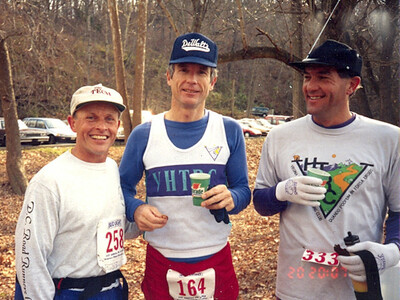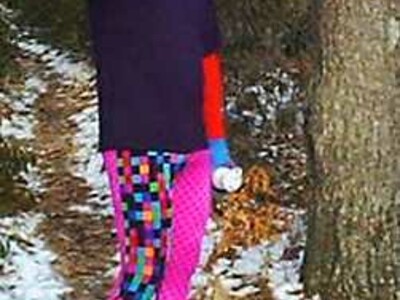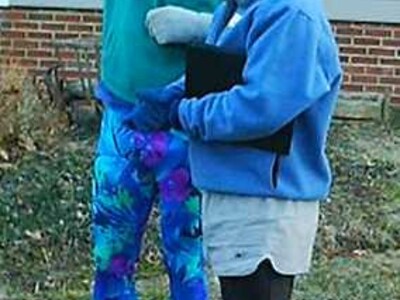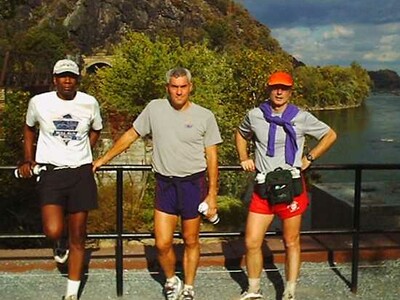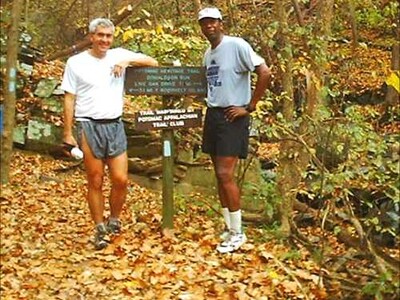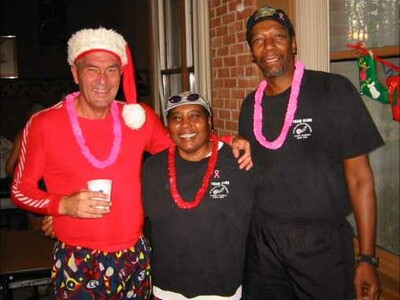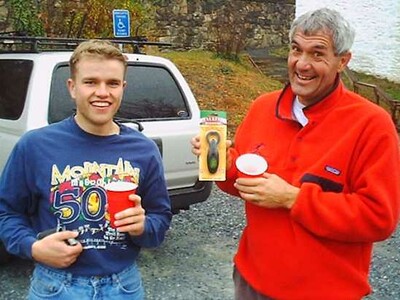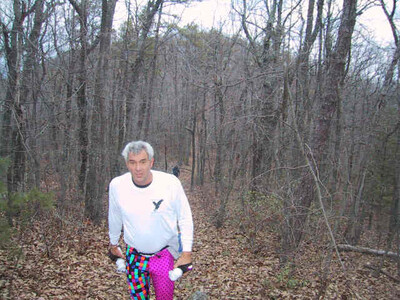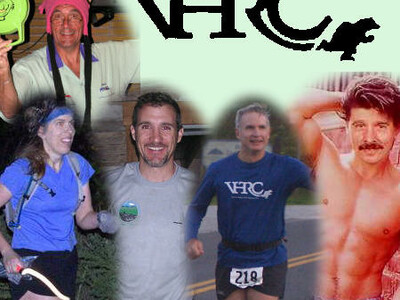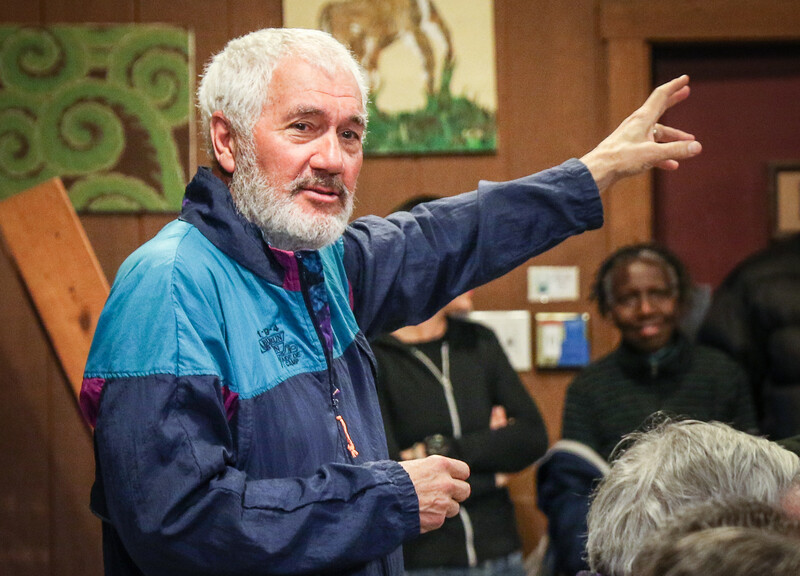
Chris Scott
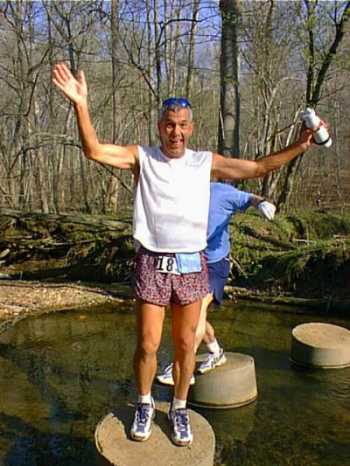
Chris Scott died on April 2 in Vermont. Chris touched many lives in many ways. The members of the Virginia Happy Trails Running Club are among those whom Chris touched and who owe him so much. There would be no VHTRC without him.
There have been many people who contributed to the magic that has become the VHTRC. Some of those were very important at the beginning of the club, but without Chris, none of those folks would have had the VHTRC platform or the iconic events to work and play on.
Chris held high school state swimming records in New Mexico. He then attended the Air Force Academy where he was on the swim team and, amazingly graduated despite his iconoclastic charm. (Chris started college at the University of New Mexico where he had a girlfriend and was in a fraternity. He transferred to the academy after one year. Only Chris could have done that and stayed sane — assuming you think Chris was sane.)
Chris was probably a better swimmer than a runner. He was involved in ocean swimming in San Diego and once won a swim-run biathlon — not an age group victory, but an overall one — in Alexandria.
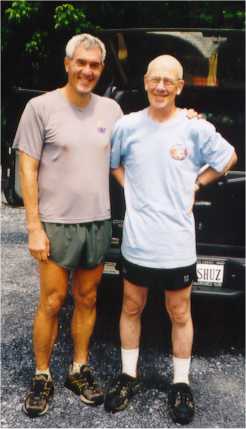
In the 1980s, Chris hung out with a loose group of runners who ran in the mountains. In 1992, this group ran for the first time on the Bull Run Trail and came up with the idea for a 50-mile event there. Each of the members of that group thought it was a wonderful idea and ended up doing a lot of work on it. None, however, would have done anything had not Chris stepped forward. He created what is now the Bull Run Run 50 Mile. He came up with the name, the theme, the course, and most of what makes the event unique. He was the first race director. Others made contributions to the event and did important work, but Chris started it all.
The BRR needed a legal entity to put it on. Chris applied to the RRCA to make a club. To everyone else, this was a mere formality meant only to facilitate BRR. But Chris said, “Oh boy! We can have other races and runs.” And, of course, we did.
Very quickly, Chris fulfilled his promise that the club would do more. He created the Women’s Half Marathon. That was entirely Chris. He came up with the idea, the course, and the permissions to have the event. He then turned it over to the race directors — particularly Jeanne Christie and, later, Margie Schlundt — who each put it on the map. Chris liked to pass events off to others to continue. He was proud when others took up his creations and improved them.

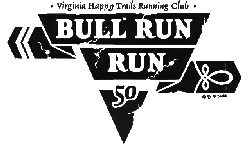

Chris came up with the logos that were so much a part of the early club. Chris persuaded his older brother, Pete, to do the artwork. Pete, an accomplished graphic artist living in Sacramento, created all the logos for the first Bull Run Runs—the map, the soldiers with Brooks running shoes, the map with “Virginia” misspelled, and the first club logo with the bear running out of the C. That bear went off on his own and became Furbutt. Pete also did the bear with long hair for the Women’s Half Marathon.
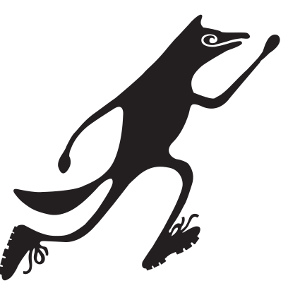
Pete later did all the logos for Chris’s Coyote events including the coyote equivalent to Furbutt. Sadly, Pete died in March, a month before Chris. Pete didn’t run with the club but was instrumental in putting it on the map.
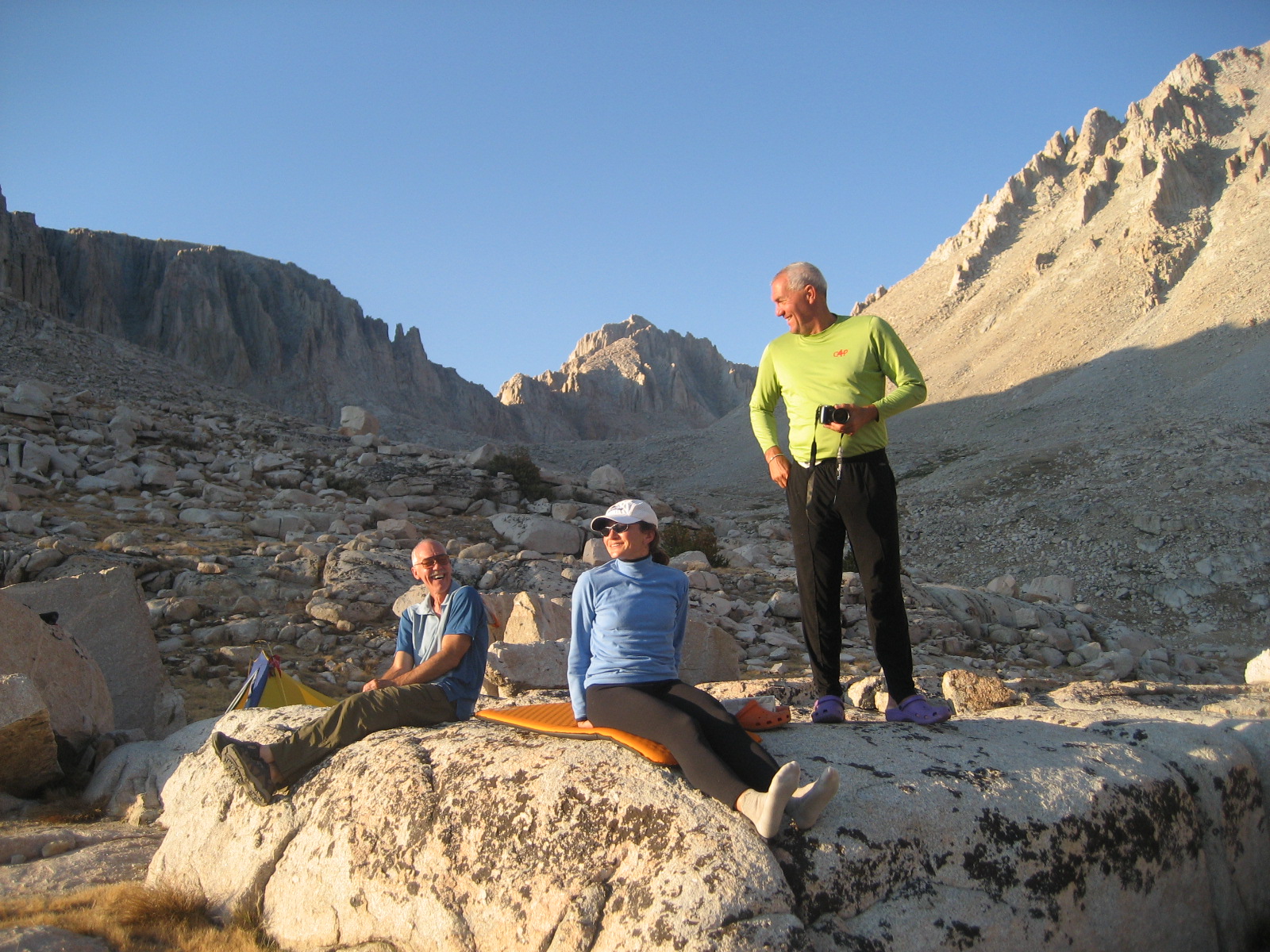
Chris’s personality was perfectly suited for a group that wanted to put on good events and yet have fun at the same time. Some saw Chris with a crazy hat and thought he was just a goofball. That was not all of Chris. He was disciplined and even anal. He was fastidious about doing things right. If you went to a Chris-managed event, you had fun and laughed, but you enjoyed good planning. If you put on an event and took its management lackadaisically, Chris was not a fan of yours. If you are in charge, you have a duty to do it as well as you can.
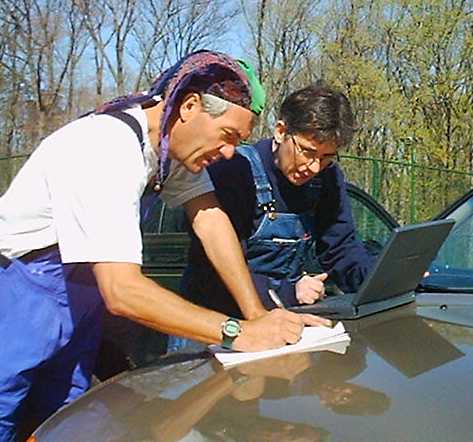
An example of Chris’s style was his insistence that there be a trial run — a “beta” version—prior to any new event. This was the purpose of the Grande Derrière — the predecessor of the Magnus Gluteus Maximus — which became the first official VHTRC event in December 1992, in preparation for the first Bull Run Run in April 1993.
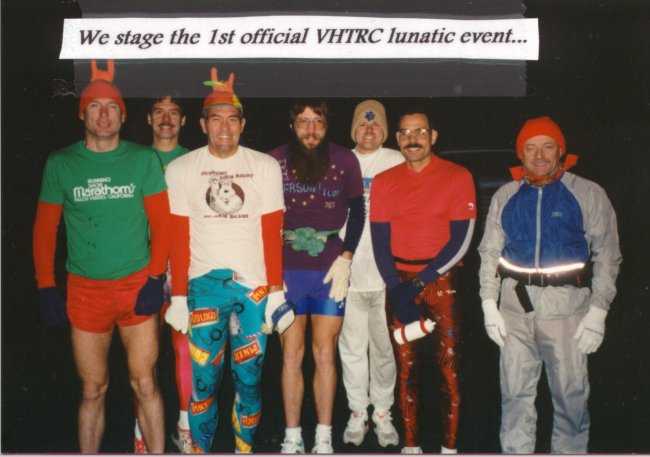
Chris was an amazing person. He had a real job. He would get to work early, spend an hour or two on his real job, and then plan Bull Run Run the rest of the day. He had enough skill and energy for two jobs. He was incredibly smart. As a “human telephone book,” he knew everyone’s name and most people’s telephone numbers.
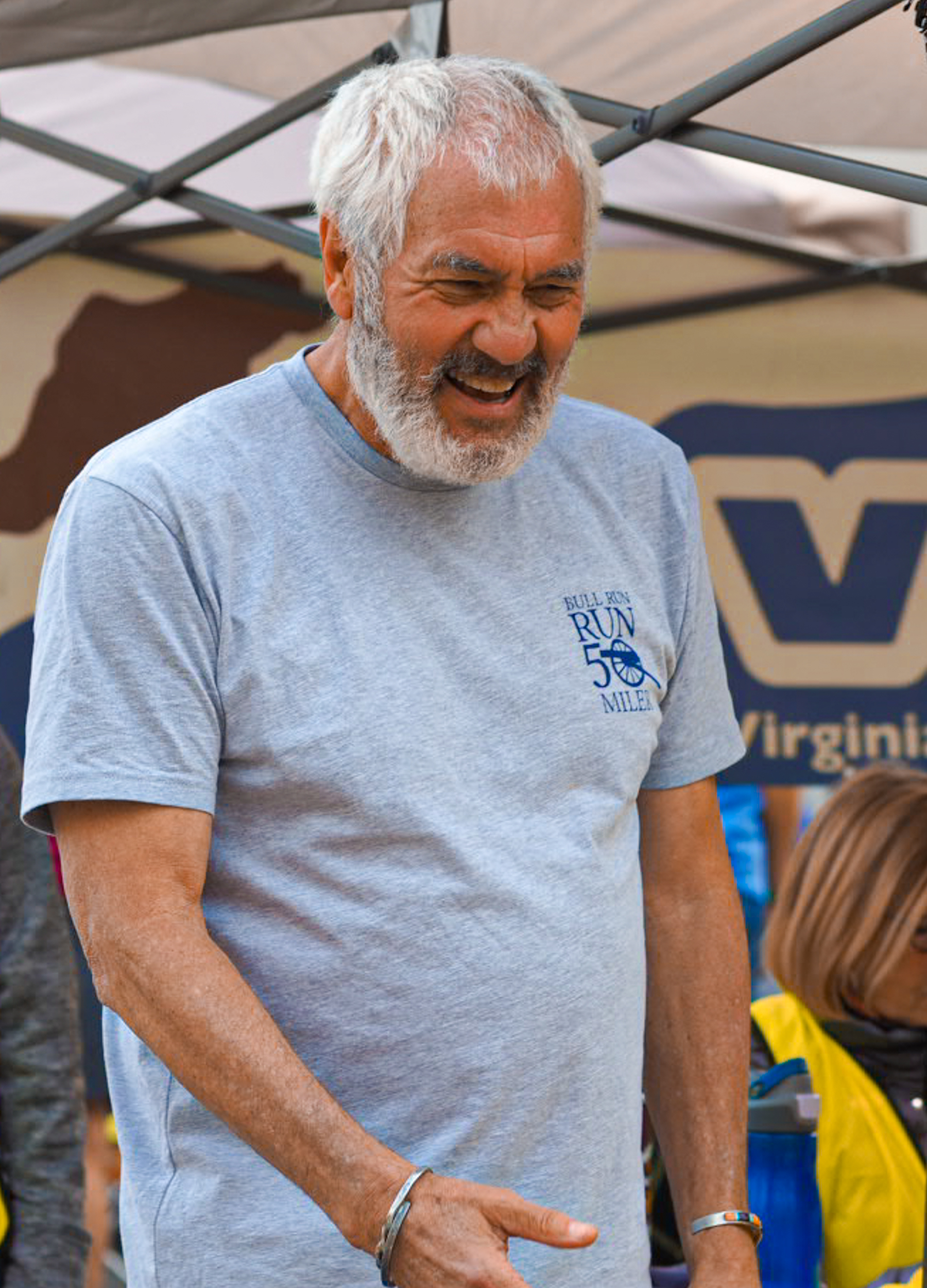
For the third BRR, he decided that the finishers award would be a fleece jacket. A normal race director would have the same jacket in different sizes. Not Chris. There were three variables to the jackets — size, color (gray if you ran for the South, blue if you ran for the North), and sewn-on stars (one to three depending on the runner’s number of BRR finishes). While he had a list of all of this someplace, he didn’t need it. At the finish, he would say, “That’s [name]. He’s a medium, gray, and — ah — two stars.” These complicated and meaningful finishing awards were typical Chris.
Chris did not stay in one place very long. After the first three BRRs, Chris moved to Oxnard, California, then back to Alexandria, then back to California, and finally to Vermont where he spent the rest of his life with wife Sue Johnston. Sue and Chris were a perfect team to enjoy the outdoors in Brrrmont, as Chris called it. Chris was a helpful observer to Sue’s many outdoor accomplishments in her home state. See: The Grid.
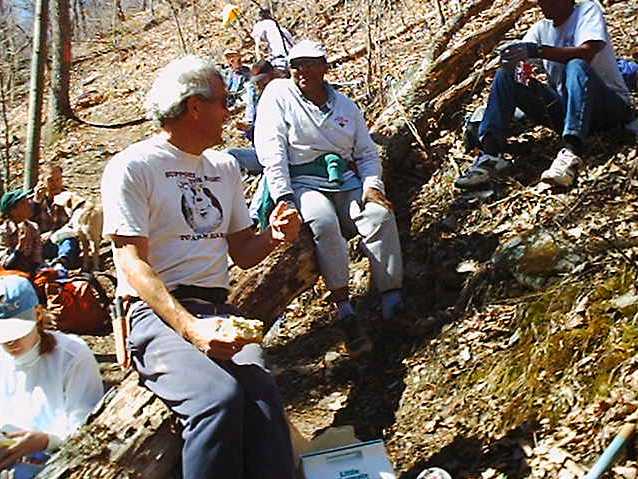
In California, Chris created his next act — the Coyote events. They started with his idea of a two day “50-50.” It would be a 50-mile first day followed by a 50 km in Pt Mugu State Park south of Oxnard on the second day. Unfortunately, heavy rains before the event closed the park. Chris moved the 50 mile to the Los Padres National Forest above Ojai. The 50 km continued “outside” Pt. Mugu park, which was “closed.” (The quotation marks are just in case the statute of limitations has not yet passed. Some runners may have strayed into the closed park.) The event was a success. Among other things, it highlighted the trails above Ojai.
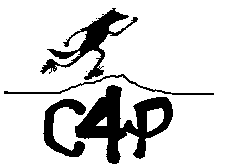
Chris didn’t stop with the 50-50. If two days of running were good, then four days would be twice as good! So was born the Coyote Four Play — C4P.
C4P was a four-day party with occasional running mixed in. The nominal distances were an eight mile “tune-up,” 50 miles, 40 miles, and 30 miles. The 50 mile was in Ojai, the others were in Pt. Mugu State Park. You didn’t have to run the whole way. Few did.
But that wasn’t all. There was a talent night, a bowling night, and lots of food and drink. Later versions of C4P had an optional prologue run on the 67-mile Backbone Trail from Santa Monica to Pt. Mugu. Entrants could buy a C4P bowling shirt. Swag included shirts, hats, jackets, etc. mostly made by local merchant, Patagonia. You could clothe yourself entirely in stuff Chris gave you at his events.
The Coyote brand spread. Chris put on run-parties in Hawaii, New Orleans, and finally in Vermont (with some spilling over into New Hampshire). He had a 100 miler — the “Two Moon” series. A happy band of the usual suspects would come from all over the world to participate. There were regulars from Canada and one from Japan.
Chris’s clear goal was for people to have fun. He had the knack of getting introverts out of their shells. He put a propeller beanie on their heads, gave them a goofy award, and made them say something in public. It was quite amazing what he could get people to do. He loved it that the participants included both elite runners and the not-very elite. He particularly enjoyed treating star runners like regular people. Chris helped more people have fun than anyone since Walt Disney. He enticed and cajoled people to go outside, play and, despite themselves, have fun.
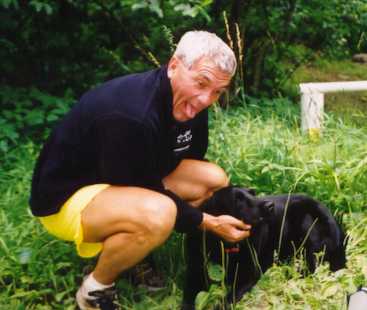
Chris was opinionated and hardheaded. Many of us had very excited shouting matches with Chris. We treasure those. The early VHTRC was governed by a small group that ran together. Our meetings were on the trail. Often, we would scream at each other about topics like entry lotteries, what were the best or worst events, etc. Chris led those “discussions” and often facilitated an agreement by the end of the run.
Chris was not a fan of pretentiousness. He found ways to comment on such silliness. For example, your runner’s pickup bag at C4P was an homage to/comment on the bag from a very pretentious race in northern California. Your C4P bag would have books from the library’s nickel rack, flyers for the Museum of Sex in NYC, sand from the beach, a very cheap electronic thingie that was maybe stolen, some other item that was for sure stolen, a very used pack of Tarot cards, a room key from a random hotel, a Starbucks gift card that Chris claimed might have money on it, but more likely didn’t, and very cool Patagonia swag.
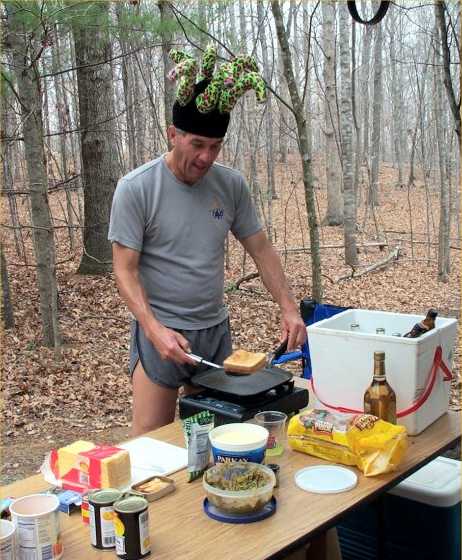
And then there was the “tuna pâtes” at the aid stations. This was, of course, cat food. Chris would present it as a delicacy. Newbies would consume and comment on this delicious special treat. Regulars knew to be very careful at an aid station if Chris had been anywhere near it.
But now Chris is gone. Chris would not want me to say “Chris would want us to…” He is not here. But we should gain something from our experience with this amazing individual. We should learn to have fun, not be pretentious, but do things well.
And go outside with a goofy hat on!
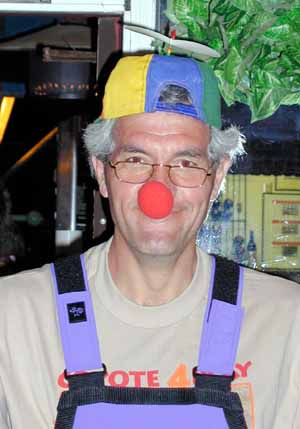
Photos
Editor's note
For another perspective on Chris Scott’s impactful life, read the obituary written by Chris’s wife, Sue Johnston, in collaboration with Chris before he died. In the early 2000s Sue was the dominant ultrarunner of the east coast, winning just about everything she entered, including MMT, Hardrock, and the first woman to start a fourth loop at the Barkley Marathons.

